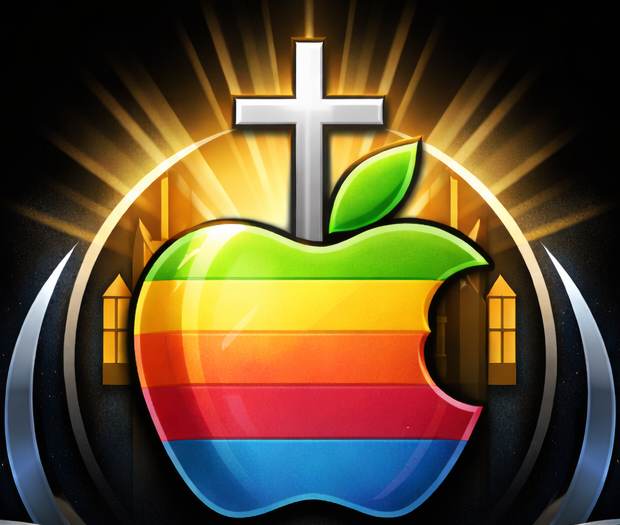 One of the most important things to do when you get your new Mac is telling it who’s boss. In system preferences, you can learn how to make your Mac do what you want it to, navigate it, and personalize it. The first look at this application is daunting, with thirty or more little icons in five subsections, but it is the key to your cyberhouse.
One of the most important things to do when you get your new Mac is telling it who’s boss. In system preferences, you can learn how to make your Mac do what you want it to, navigate it, and personalize it. The first look at this application is daunting, with thirty or more little icons in five subsections, but it is the key to your cyberhouse.
In order to be unconventional, like Apple itself, I will begin at the bottom. The fifth subsection, entitled Other, may not contain any icons at the moment because your computer is new, but once you get there you can always get help by typing keywords into the blue search bar under the “help” heading at the top of your screen.
Above that subsection is System, which is generally most helpful if you are sharing your mac with someone else, or if you are a parent. “Users & Groups” will allow you to set up logins for different people in order to keep your respective affairs separate, and “Parental Controls” can help you to manage other users’ use of the computer, its applications, and the internet. You can also manage these controls from another computer. “Date & Time” is fairly self-explanatory, as is “Software Update”. Under “Dictation & Speech”, you can, of course, dictate at any time that it would have been possible to type, and you can also change the shortcut to this function. “Time Machine” is easy to configure, and it is automatic; it simply keeps backups until your backup disk is full, at which time it begins deleting the oldest ones. The “Accessibility” subheading is quite extensive, but it mostly reflects your personal preferences. Here you can change the settings to cater to your specific needs, such as enlarging text and cursors for better vision or allowing your Mac to read you things. There are many other settings here, one of which is “invert colors”; this in particular is highly entertaining, but completely arbitrary as far as I can tell. “Startup Disk” allows you to change the system that you are using on your Mac, or to restart it entirely.
Next, “Internet & Wireless”- this deals with sharing information through iCloud, mail, the internet, and Bluetooth, to name a few. To learn more about iCloud, you will have to search somewhere else, because it is much too extensive to cover in this overview; suffice it to say that this is a complex and extensive system of wireless sharing. “Mails, Contacts & Calendars” sets up your accounts in various apps, as it explains on the opening page, and “Network” deals with your Wi-Fi and Bluetooth connections. The latter is often difficult to set up, but the “Assist me…” button at the bottom helps with this stage of the setup. “Bluetooth” connects other devices to your Mac, but this is obviously only relevant if you have such devices. Finally, “Sharing” is essentially an overview of the preceding subsection, and allows you to configure most of the settings that we just went over from a single page.
Hardware, the second subsection, deals with the physical, rather than virtual, functions of your Mac. Most of these are fairly simple, but I do have a few tips. Under “Displays”, it would be prudent to leave the color at default, but the sleep functions in “Energy Saver” can be modified depending on how much time you spend on your computer when it is not charging. “Keyboard” should also be left as is, unless for some reason you detest shortcuts, and “Mouse” is only useful if you have a Bluetooth mouse. The gestures in the “Trackpad” section are very useful, but some people find them infuriating or confusing. If you are one of these, then I would certainly advise unchecking most of the boxes; also, I have never been able to make the “look up” function work, so if you have the same problem, you are not alone. I would also recommend using “Print & Scan” whenever possible, because it allows you to interact with printers without moving your computer or digging for the right cord.
At last, we arrive at the most entertaining part of system preferences- Personal. “General”, “Desktop & Screen Saver”, and “Dock” all allow you to express your unique personality on your Mac, but “Security & Privacy”, “Notifications” and “Language & Text” are more serious matters. Essentially, if you are an American who is not a secret agent, you will most likely be able to leave those alone. “Mission Control”, the very last subsection, is an overview of all open windows, applications, and the Dashboard in one screen, and you may also organize this as according to your personal preferences.
It is important to remember while in System Preferences to be very careful, because some adjustments are irreversible- most people have an experience with one of these troublesome quirks at least once, so one must be very attentive when dealing with this application. Hopefully, this article has helped you with the adjustment to your new Mac; thanks for reading!
-Erin
Image Courtesy: http://en.wikipedia.org/wiki/File:System_Preferences_icon.png
